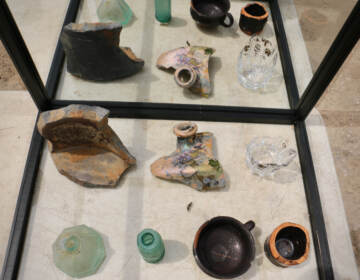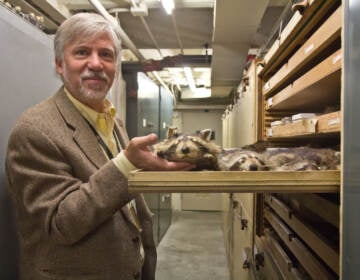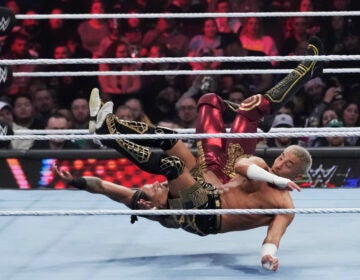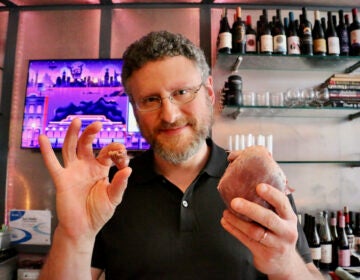What can human bones, buried beneath a construction site, teach us about 18th century Philadelphia?
Scientists, archaeologists, and historians are documenting stories from those buried and uncovered at the former First Baptist Church cemetery site.
Listen 1:44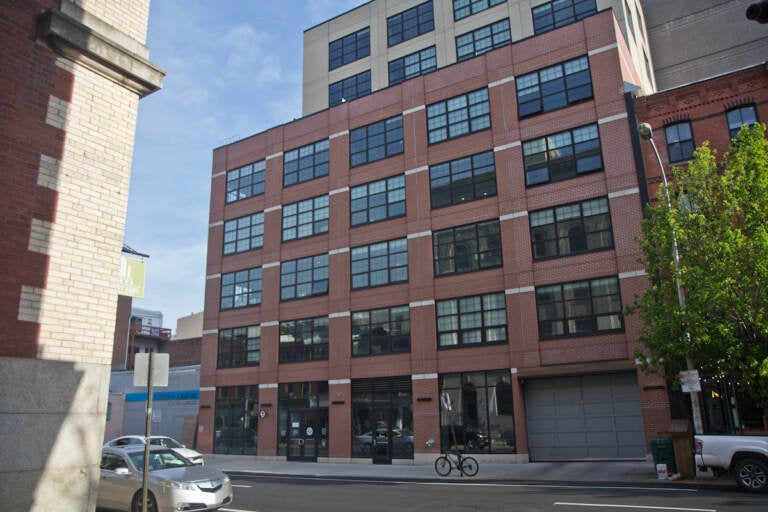
218 Arch Street in May 2022. (Kimberly Paynter/WHYY)
In 2016, while setting the foundation for a new condominium at 218 Arch Street in Philadelphia, construction workers unearthed something shocking: a box full of bones.
They had unknowingly stumbled upon remnants of the First Baptist Church cemetery, which had occupied the Arch Street site in the 18th century.
The findings sparked publicity and confusion over who the remains belonged to and what should happen to them, given that the site is private property. Scientists, archaeologists, and historians have since worked with the development company and the First Baptist Church to document the stories of the people who were buried there and to learn more about 18th century Philadelphia.

At 7 p.m. on Wednesday, May 11, Rutgers-Camden University researchers will host a virtual public forum to share more about what they are calling the Arch Street Project.
The researchers stress that they do not conduct any research on this project without the express permission of the church.
The people whose bones were uncovered at the First Baptist Church cemetery site (and will be reburied in September 2023 at Mount Moriah Cemetery in Yeadon, Pa.) represent a cross section of Philadelphia society at the time. This is unusual for cemeteries back then, said historian Nicholas Bonneau. He is part of the research group studying the burial grounds and teaches the history of science and public health at the University of Maryland Baltimore County.
He explained that until the late 19th century, many burials in churchyards were people born into a particular congregation, faith, or community. However, since Baptists decide to join the faith, rather than are born into it, those who were buried at the First Baptist Church cemetery included people who may have come from different congregations or walks of life. Bonneau said that, in fact, of the 3,000 people buried at the Arch Street cemetery, most were not paying members of the First Baptist Congregation.
“So we get from 1709 all the way up to the dawn of the Civil War, a really great cross-section of Philadelphia life and better than any other cemetery could have provided us,” Bonneau said. “This has been a fantastic way to get a glimpse into what Philadelphia life was like in those important periods of transition.”
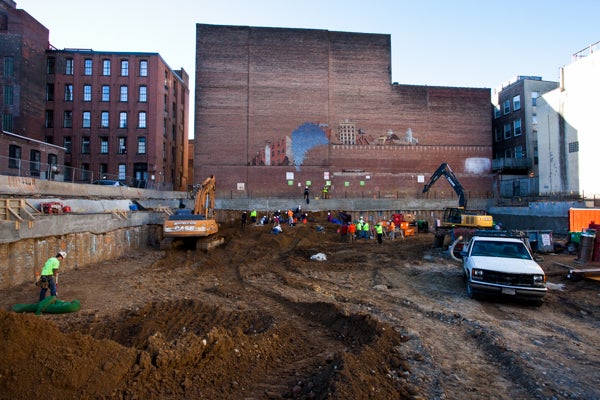
Dental calculus: Studying 18th century microbiomes
Bonneau has studied the historic records of the church itself and other archives and found that the people buried at the cemetery include brick layers, clock makers, sailors, politicians from other states who came to the Congress in Philadelphia and died here, and at least one artist whose works are on display at the New York Metropolitan Museum of Art.
He is working with the scientists in the group to identify people, so they can be put together in family groups when they are reburied next September.
One of those scientists is Anna Dhody, a physical anthropologist and director of the Mütter Research Institute at the Mütter Museum. She said she and her research collaborators are excited about the genetic data that can be gathered from the people who were buried at the site. She studies dental calculus, which is what gets left on your teeth and stays hard without regular dental cleaning.
“It’s a host of amazing information and it contains basically … what we now call your microbiome,” she said. The microbiome refers to all the bacteria, fungi, and viruses that live with and inside humans.
Since Dhody started working on the project, she has collected a few samples of dental calculus by cleaning the people’s teeth, then sending the samples to collaborators at McMaster University who study ancient DNA, just to make sure the research will work. It looks like it does.
“It was absolutely amazing what we got back, the yields and the diversity,” she said.
She said this could help historians and scientists learn more about how people lived during a time without antibiotics when there were many epidemics in Philadelphia, including smallpox, cholera, and yellow fever, including a famous 1793 outbreak.
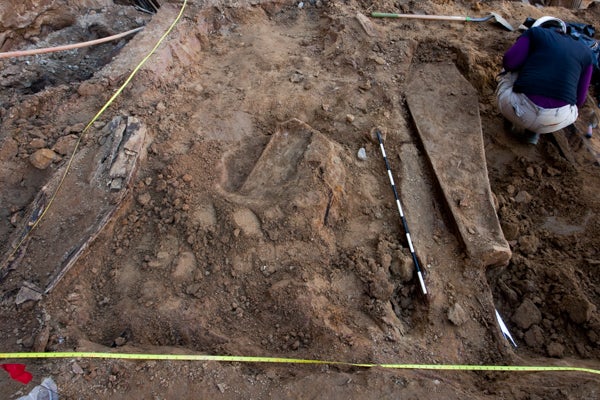
Unburied bones: What happens next?
There’s also much to learn from the objects at the cemetery itself, said George Leader, an archaeologist at the College of New Jersey. For example, he has studied the coffins and connected some of the handles to a hardware catalog from London in the 1700s.
“There’s an important connection here that the majority of the metal and … artisan handles are coming from England at that time. They are not being produced here,” he said.
The cemetery finds have raised an important question: What should happen when historic human remains are unearthed on private property? That question led to a 2017 court case, in which a Philadelphia judge ordered the developers to work with archaeologists to move the remains for further preservation, as well as to cover the cost of reburying them.
During the case, a lawyer for the City of Philadelphia told the judge that the city can only be involved in something like this if it happens on city or public property. Philadelphia’s Department of Licenses and Inspections confirmed this is still the case. The department can only enforce the city’s policy, not create it.
“Philadelphia is a city of cemeteries. This will not be the last time that a cemetery has been impacted by construction,” said Kimberlee Moran, director of forensic science at Rutgers University.
“That kind of legal gray area has not been resolved,” she said. “That’s going to potentially still be problematic in future years as privately funded construction projects, development projects happen in the city.”
The Philadelphia Archaeological Forum, the group that took the property developers to court, has since created a database of historic burial grounds in the city.
Philadelphia isn’t the only U.S. city where something like this has occurred. Bonneau, the historian, pointed to the discovery of remains from Baltimore’s historic 19th century Laurel Cemetery – in a mall parking lot in 2018. Maryland has since passed legislation requiring anyone who owns land with a burial site that is more than 50 years old to consult with the Maryland Historical Trust.
WHYY is your source for fact-based, in-depth journalism and information. As a nonprofit organization, we rely on financial support from readers like you. Please give today.



